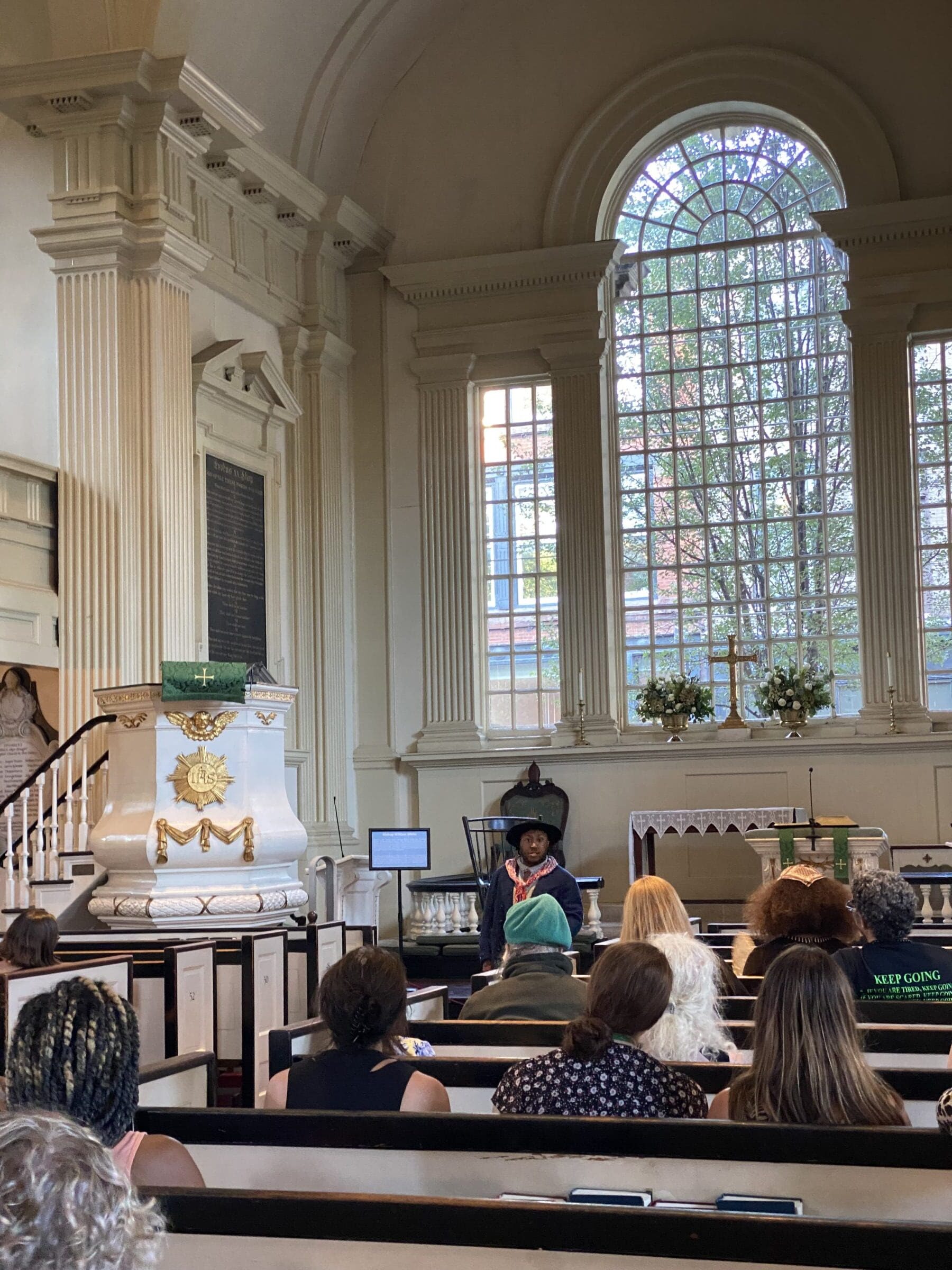Our Congregation
We welcome all people, from all walks of life, wherever they are on their journey of faith.
Thirty-nine Philadelphia colonists, loyal to the Bishop of London and desiring to worship according to the rites of the Church of England, established Christ Church on November 15, 1695 on land previously under the care of the Lenni Lenape peoples.
Construction began on the current church building in 1727 and concluded in 1744. The tower and steeple, financed by a lottery managed in part by Benjamin Franklin, were completed in 1754. The building is an outstanding example of colonial architecture in the Georgian spirit, arguably the finest building of its time in the colonies.

Christ Church and its clergy played a critical role during the Revolutionary era. In September 1774, the Rev. Jacob Duché, opened the first Continental Congress with prayers citing the 35th Psalm, Plead my cause, O LORD, with them that strive with me: fight against them that fight against me. John Adams recounted to his wife Abigail, “I must confess I never heard a better prayer; heaven had ordained that psalm to be read on that morning.”
During this time, influential Philadelphians heard sermons in Christ Church both supporting and discouraging Independence. On July 4, 1776, Christ Church struck King George’s name from the prayers in worship. Christ Church clergy served as chaplains to the Continental Congress.
In 1790, Christ Church designated a double-pew in the center aisle for the President of the United States to use for worship. President George Washington regularly attended, as did President John Adams while Philadelphia remained the capital. The pew is still so designated, but any worshipper may use it if not occupied.
Seven signers of the Declaration of Independence and five framers of the Constitution are buried in the hallowed grounds of Christ Church. In 1948, Congress designated Christ Church as a national shrine during the creation of Independence National Historical Park.
After the Revolution, Christ Church played the instrumental role in organizing the Episcopal Church out of the remnants of the colonial Church of England. Buried in the chancel of Christ Church is the Right Reverend William White, ninth Rector of the parish, Chaplain of the Continental Congress, first Bishop of Pennsylvania, and Presiding Bishop of the Episcopal Church in its formative years. Bishop White demonstrated that the Church in this nation could be independent yet still in communion with the Church in England, a fundamental tenet of Anglicanism. The first General Convention that unified the scattered Episcopal Church and approved the first American Book of Common Prayer met in this building in 1789.
“My mother was ahead of her time because she talked about the importance of the covenant of giving. She encouraged me to think about my commitment to God and his work and the needs of others. And to make my giving decisions based on God’s needs as I saw them.”
“I see us as stewards, temporary guardians for this wonderful and sacred place. I not only give to Christ Church for my personal connection to this historic place, but also for accepting me fully, for who I am and making me feel welcome every single Sunday I walk through those doors. For allowing me to participate fully in all the traditions. For reminding me that I belong to a wonderful community of people who love this place just as much as I do.”

Join Our Church
Christ Church is blessed to have members of all walks of life. Whether you are seeking a Sunday School for your child, a holy venue for your wedding, or simply a place to explore the questions of faith, Christ Church invites you to explore the lively possibilities within our historic walls.

